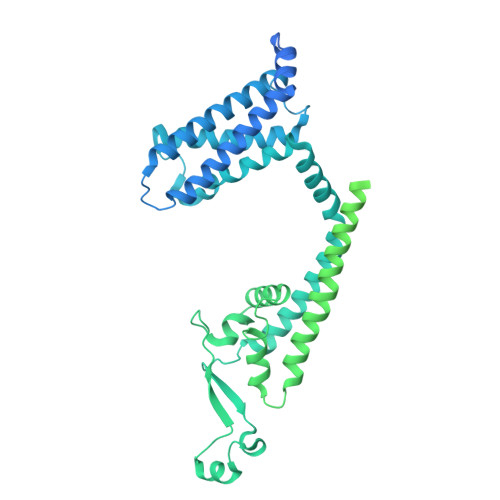N-type fast inactivation of a eukaryotic voltage-gated sodium channel.
Zhang, J., Shi, Y., Fan, J., Chen, H., Xia, Z., Huang, B., Jiang, J., Gong, J., Huang, Z., Jiang, D.(2022) Nat Commun 13: 2713-2713
- PubMed: 35581266
- DOI: https://doi.org/10.1038/s41467-022-30400-w
- Primary Citation of Related Structures:
7X5V - PubMed Abstract:
Voltage-gated sodium (Na V ) channels initiate action potentials. Fast inactivation of Na V channels, mediated by an Ile-Phe-Met motif, is crucial for preventing hyperexcitability and regulating firing frequency. Here we present cryo-electron microscopy structure of Na V Eh from the coccolithophore Emiliania huxleyi, which reveals an unexpected molecular gating mechanism for Na V channel fast inactivation independent of the Ile-Phe-Met motif. An N-terminal helix of Na V Eh plugs into the open activation gate and blocks it. The binding pose of the helix is stabilized by multiple electrostatic interactions. Deletion of the helix or mutations blocking the electrostatic interactions completely abolished the fast inactivation. These strong interactions enable rapid inactivation, but also delay recovery from fast inactivation, which is ~160-fold slower than human Na V channels. Together, our results provide mechanistic insights into fast inactivation of Na V Eh that fundamentally differs from the conventional local allosteric inhibition, revealing both surprising structural diversity and functional conservation of ion channel inactivation.
Organizational Affiliation:
College of Life Science and Technology, Key Laboratory of Molecular Biophysics of MOE, Huazhong University of Science and Technology, Wuhan, Hubei, China.















